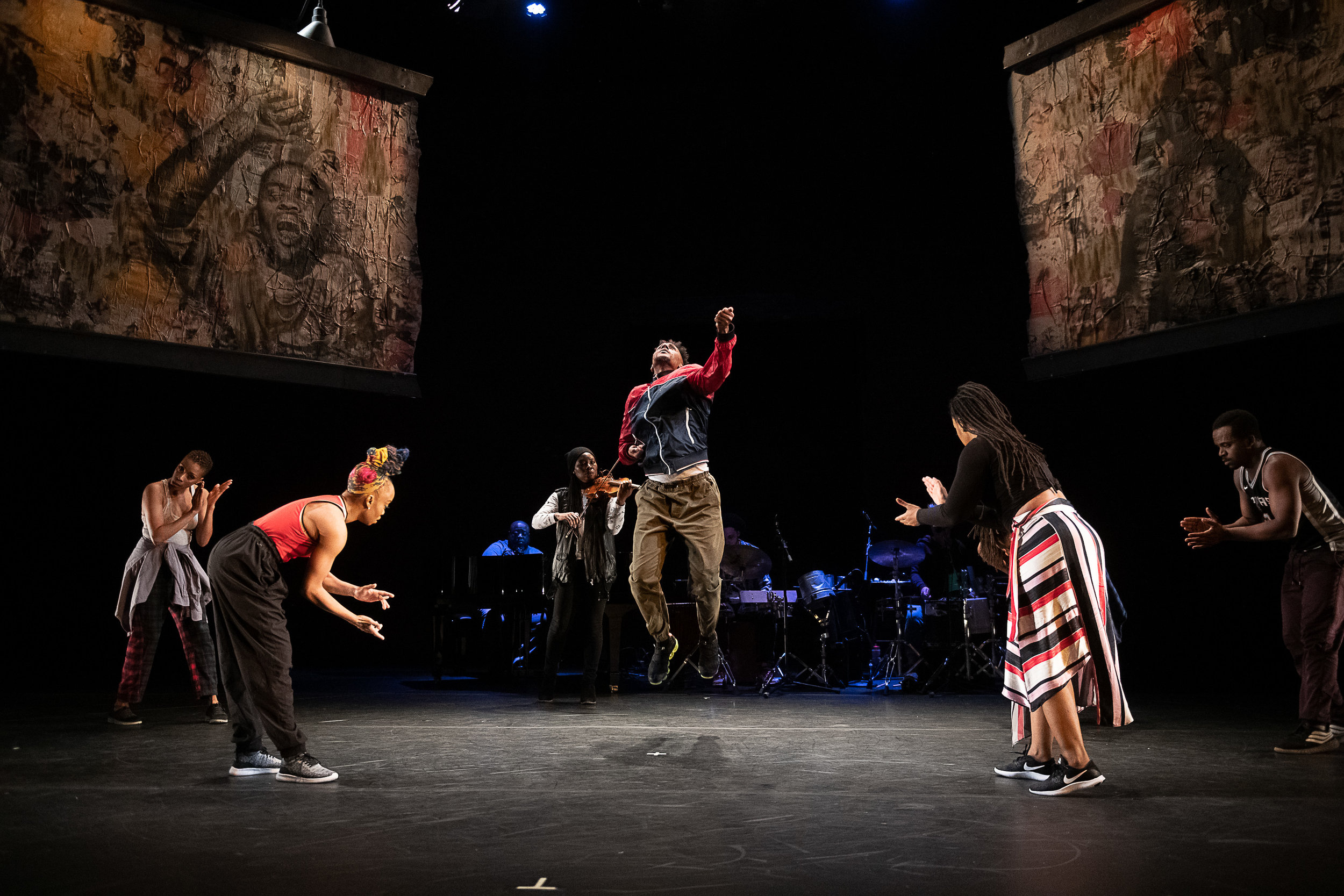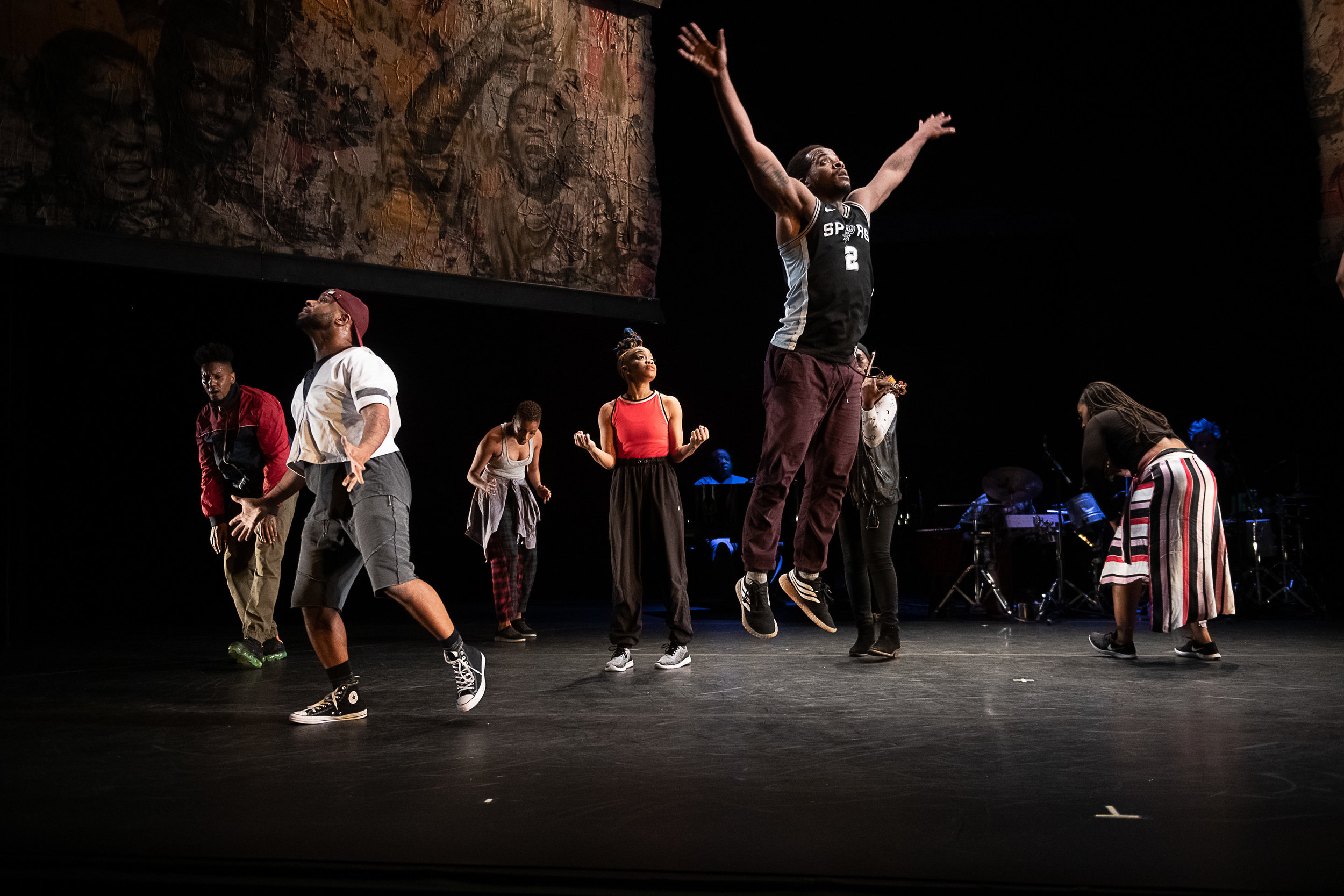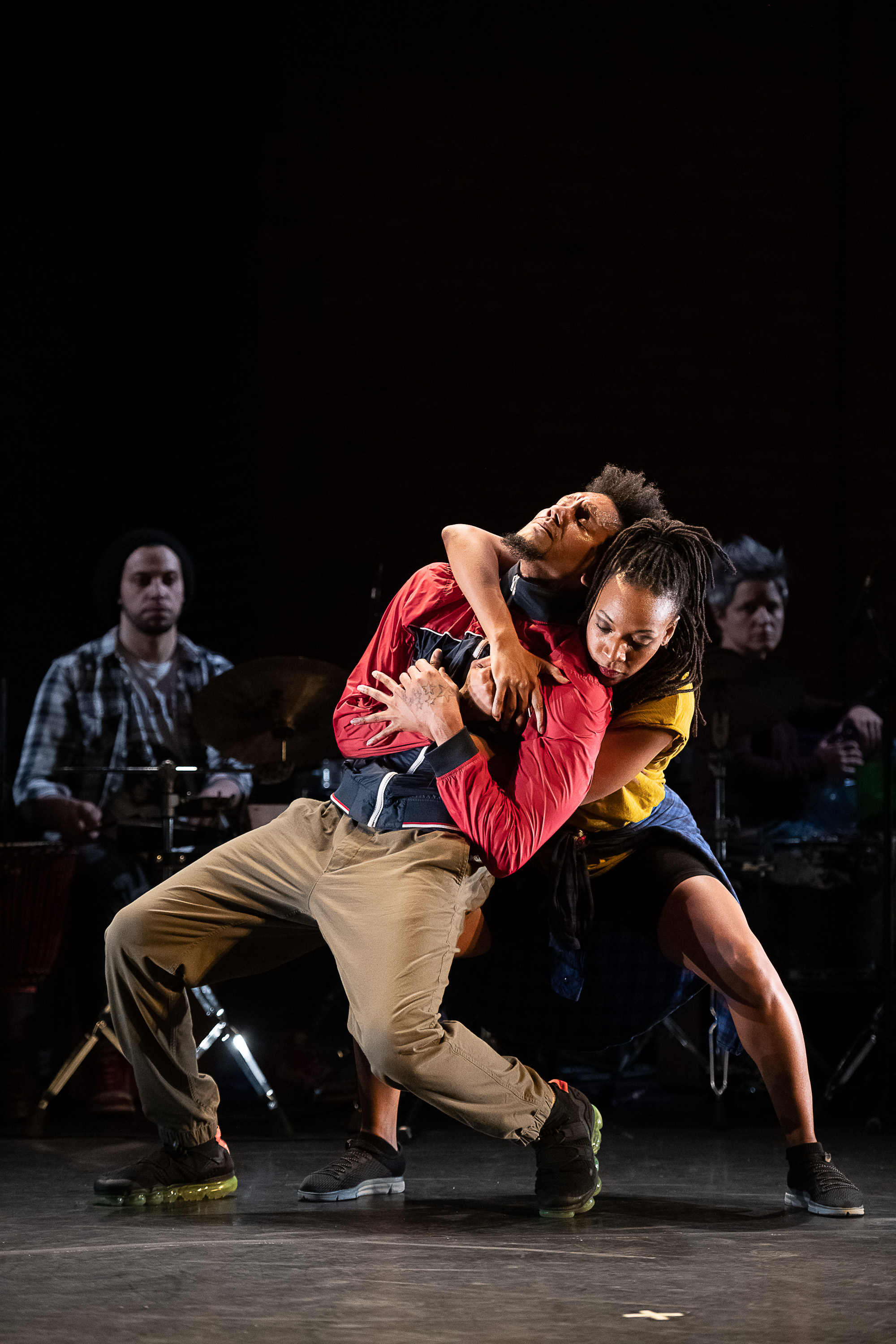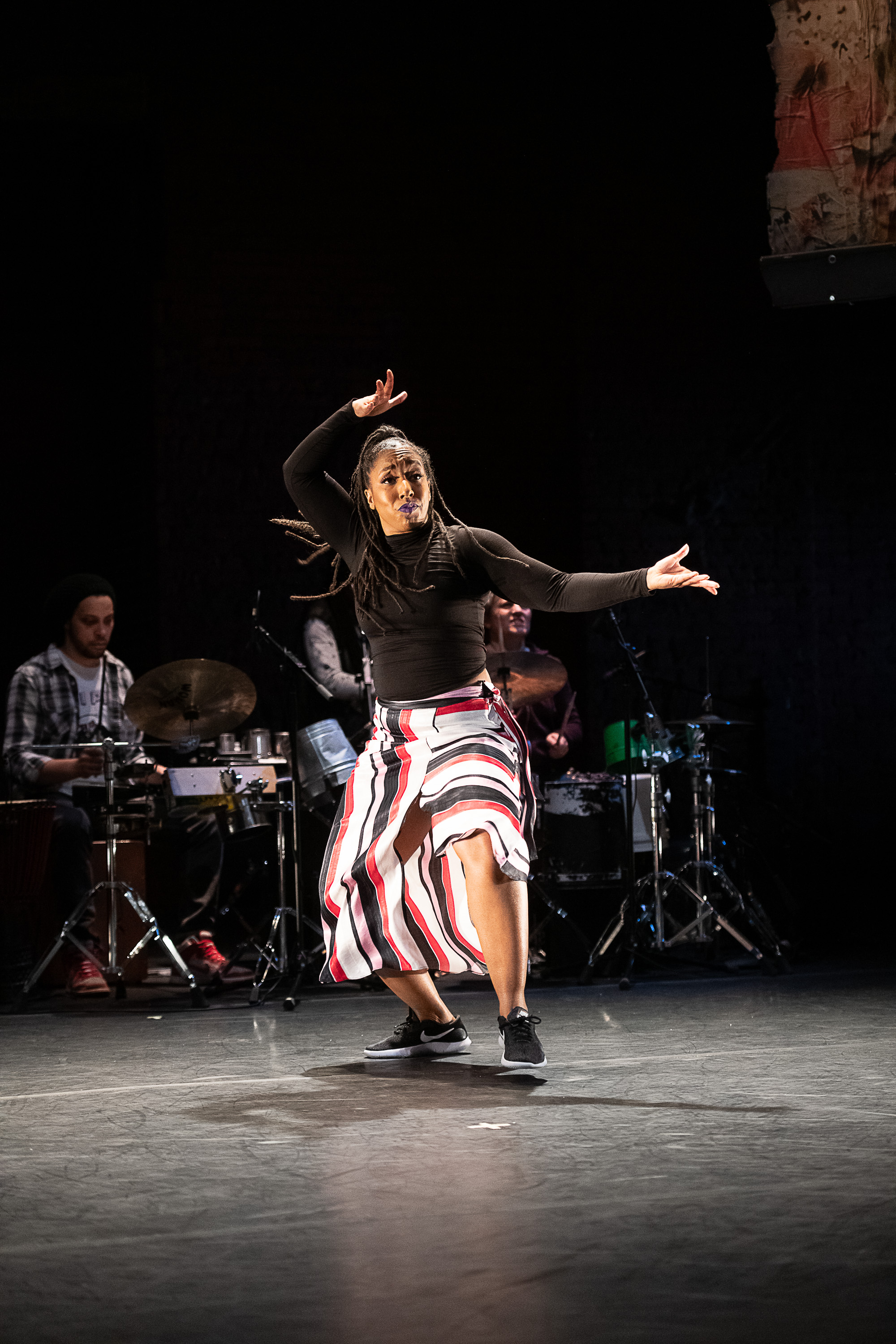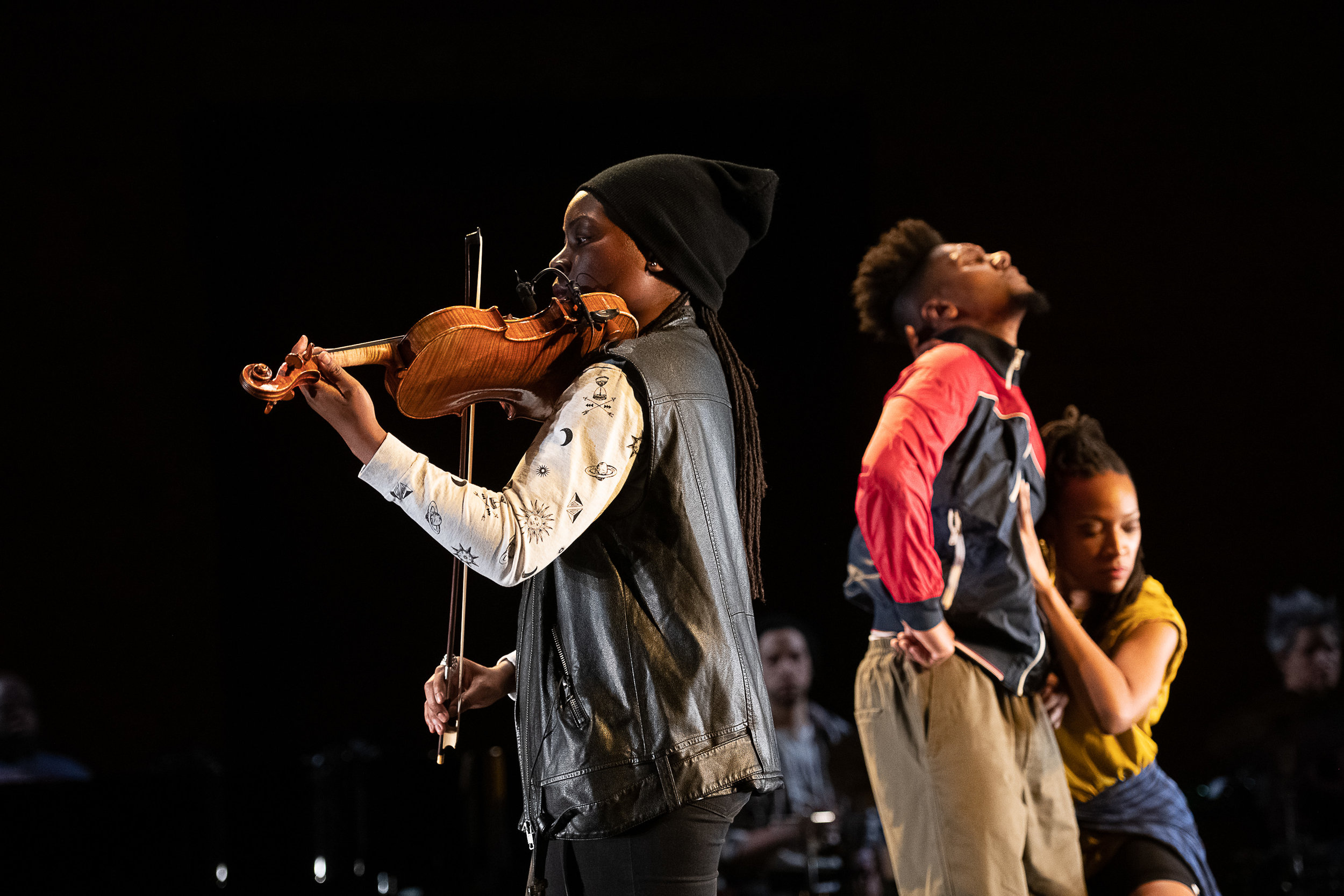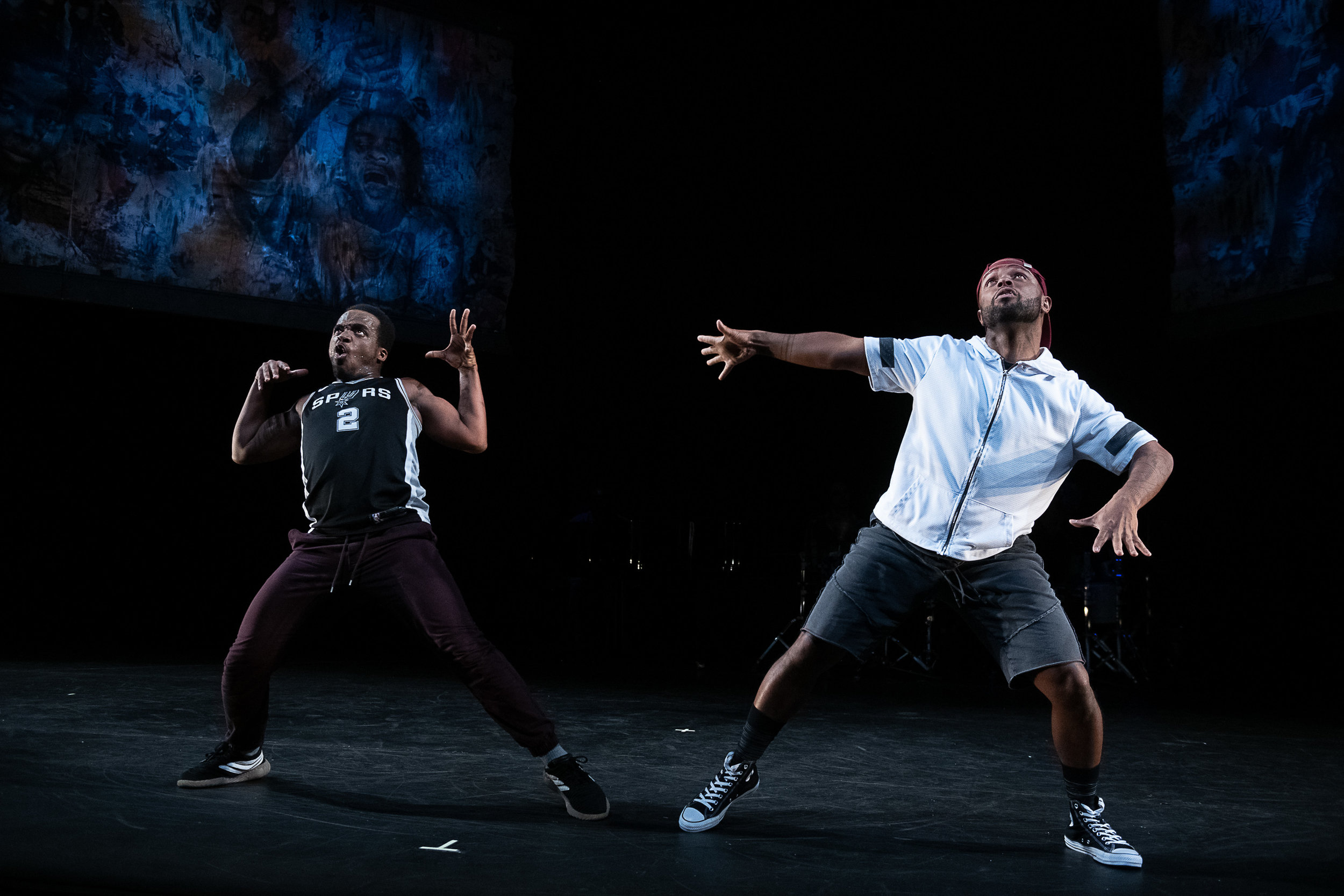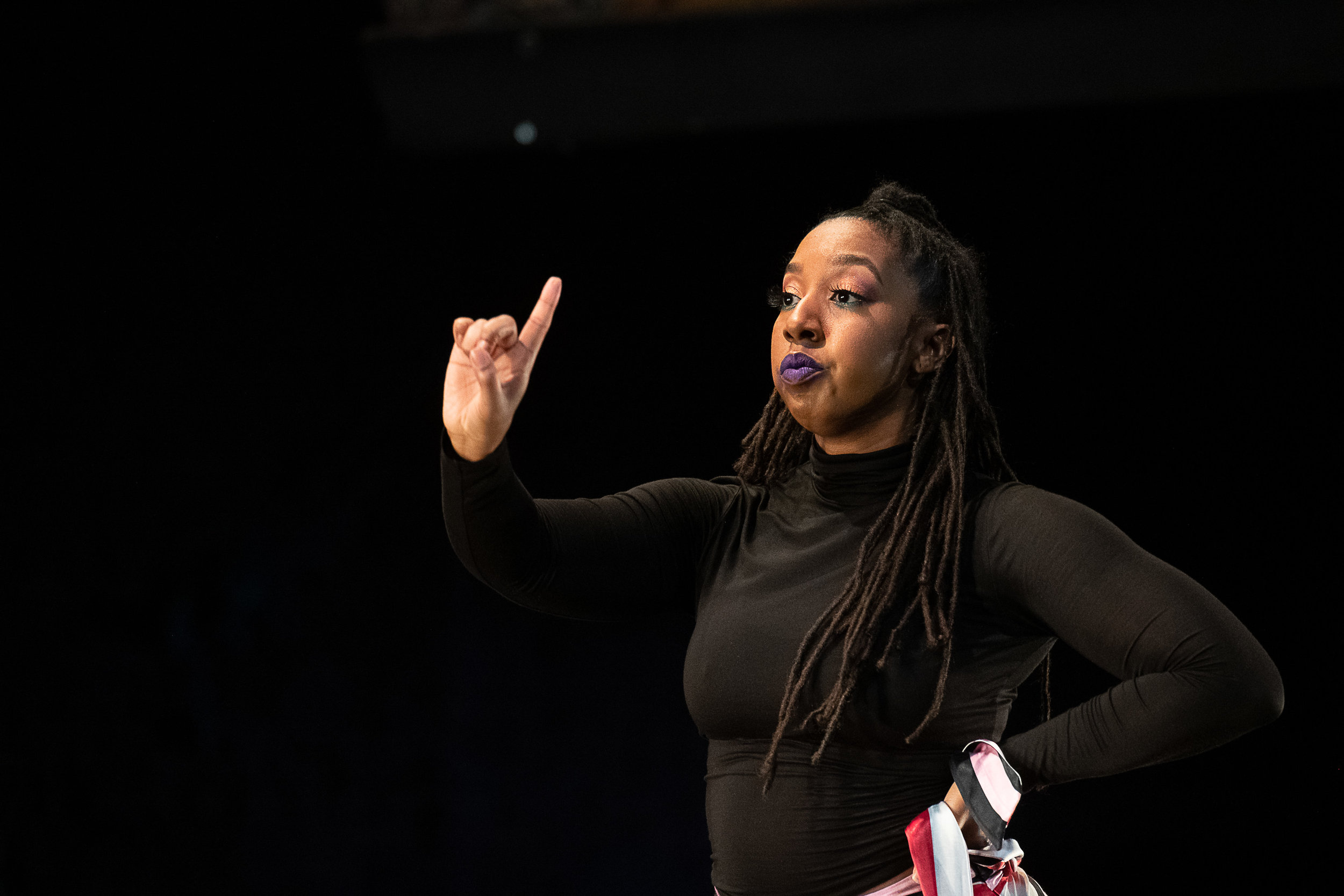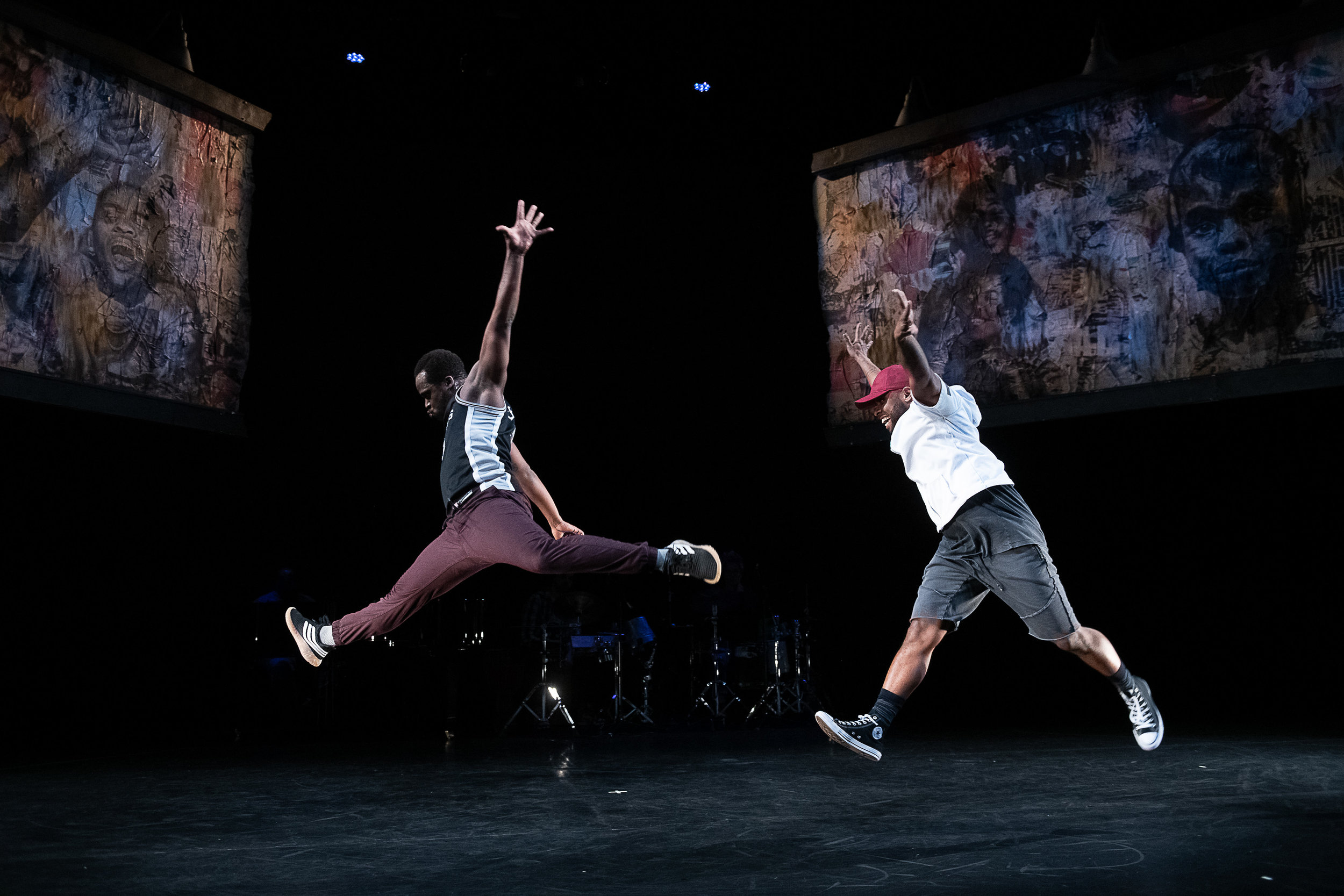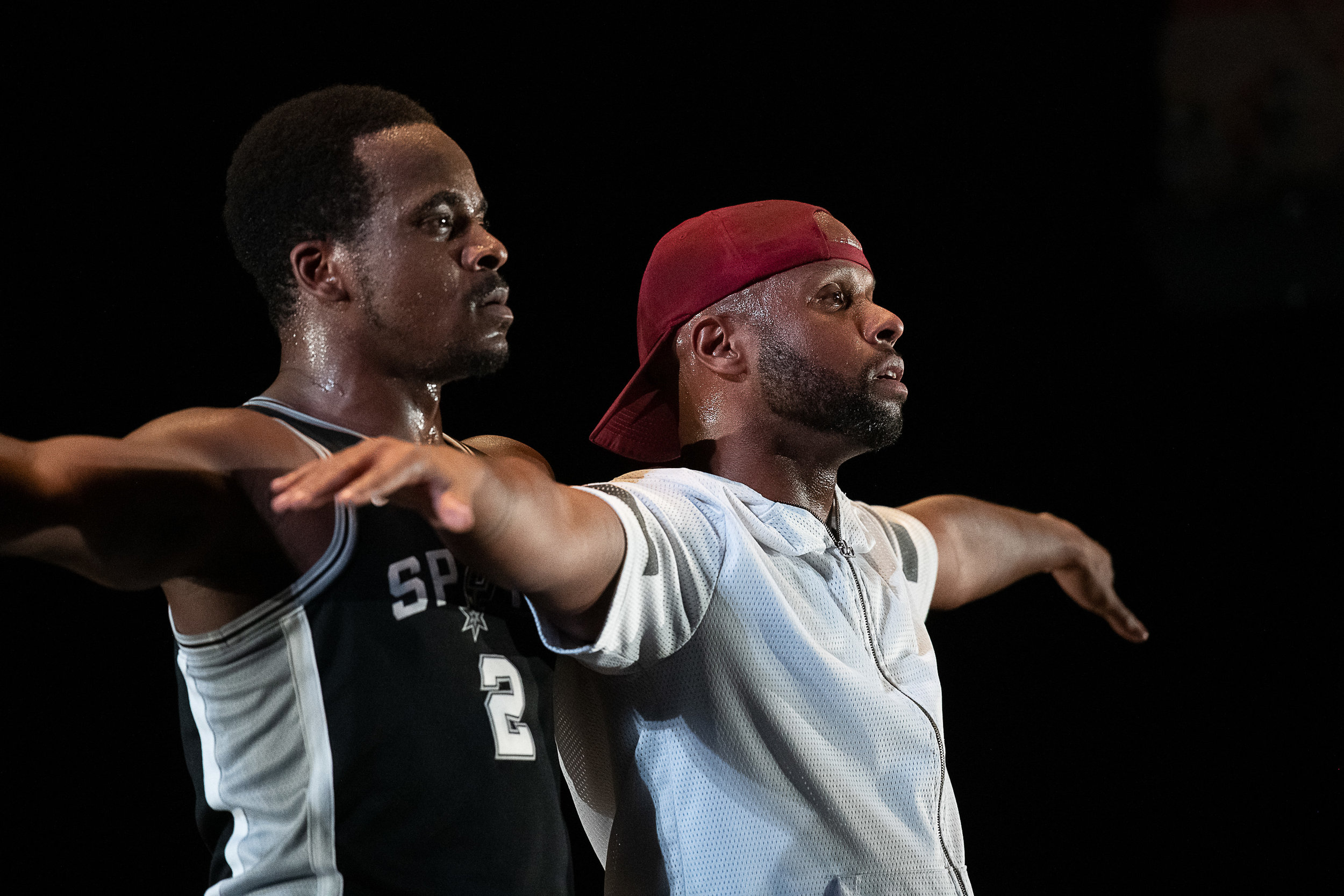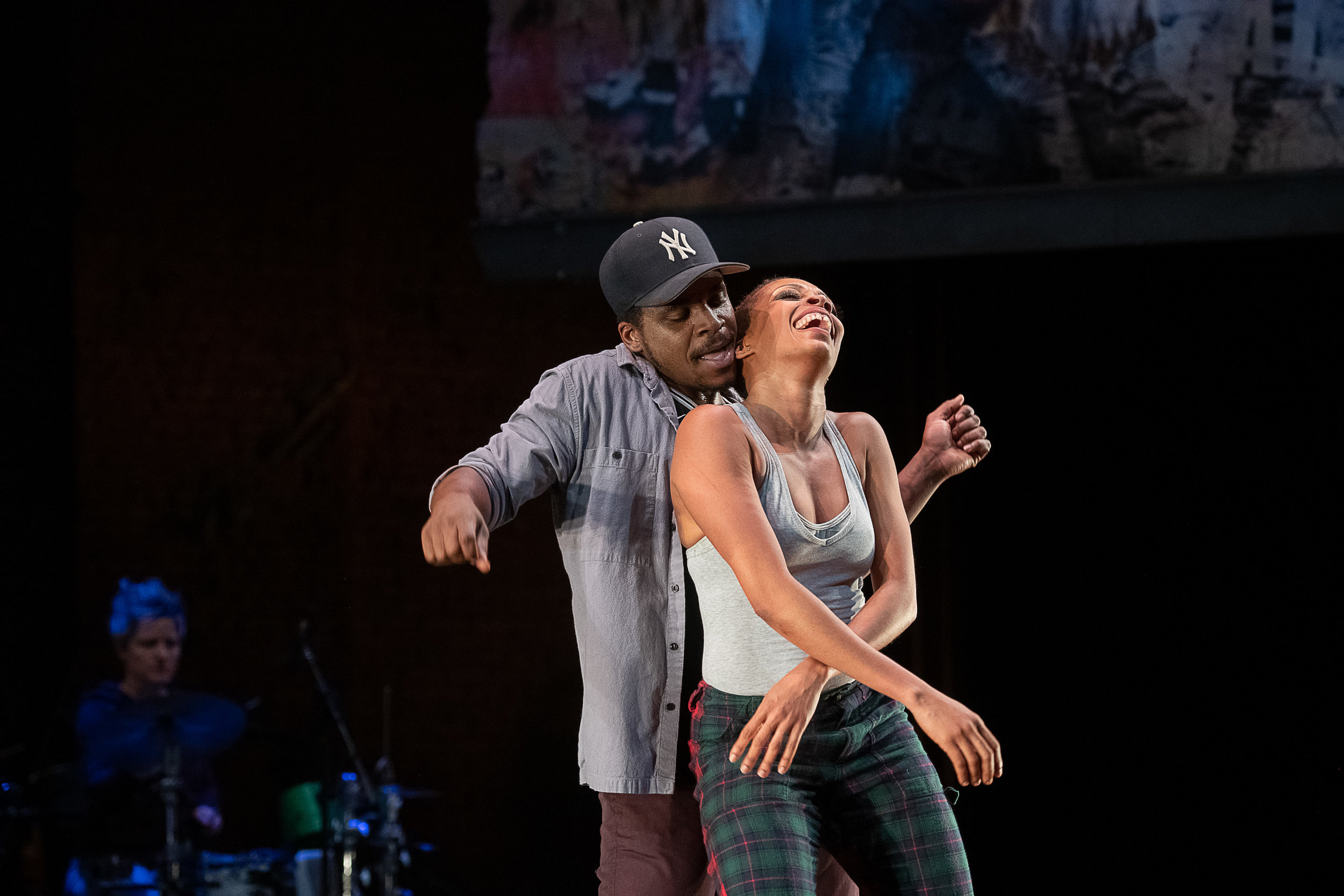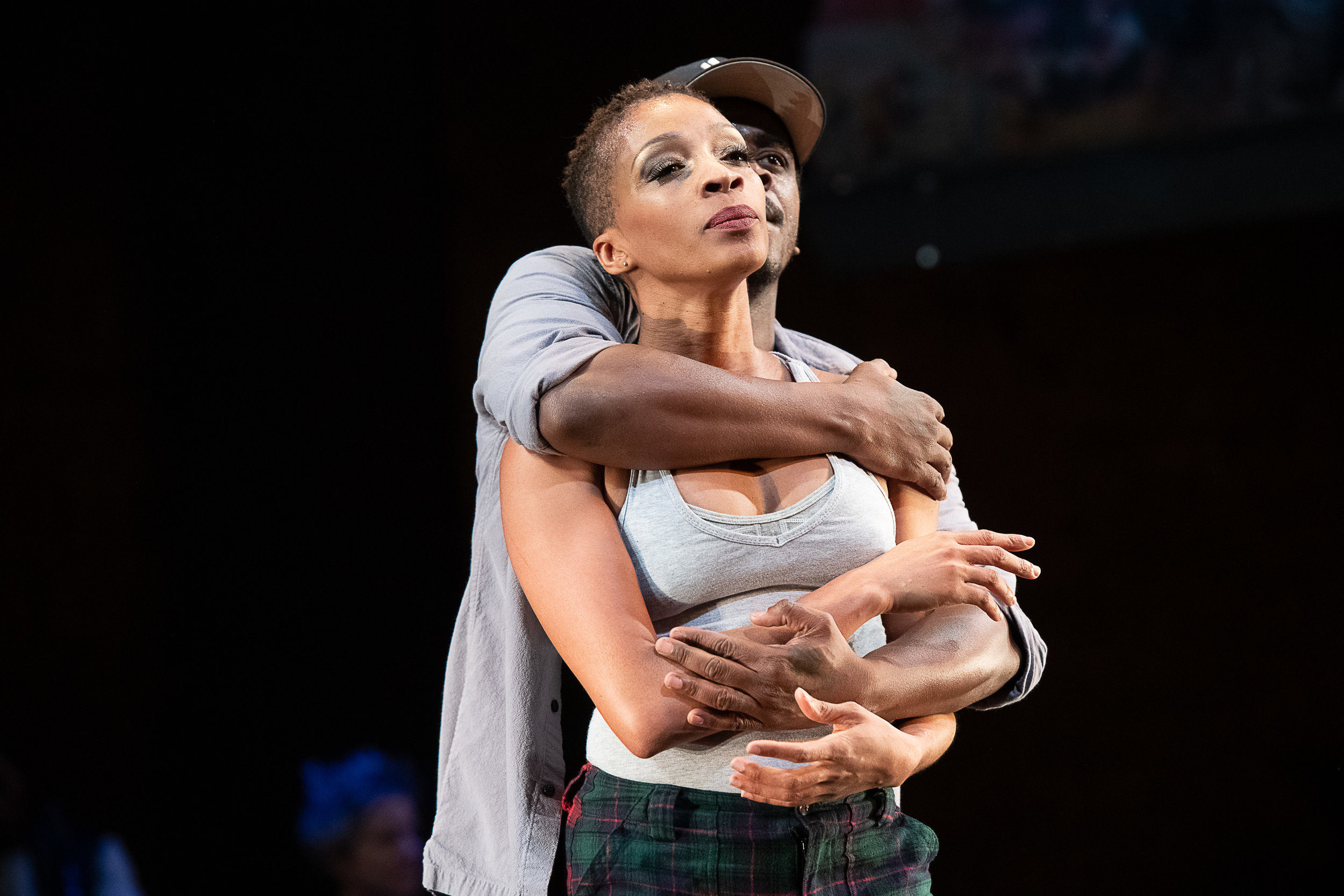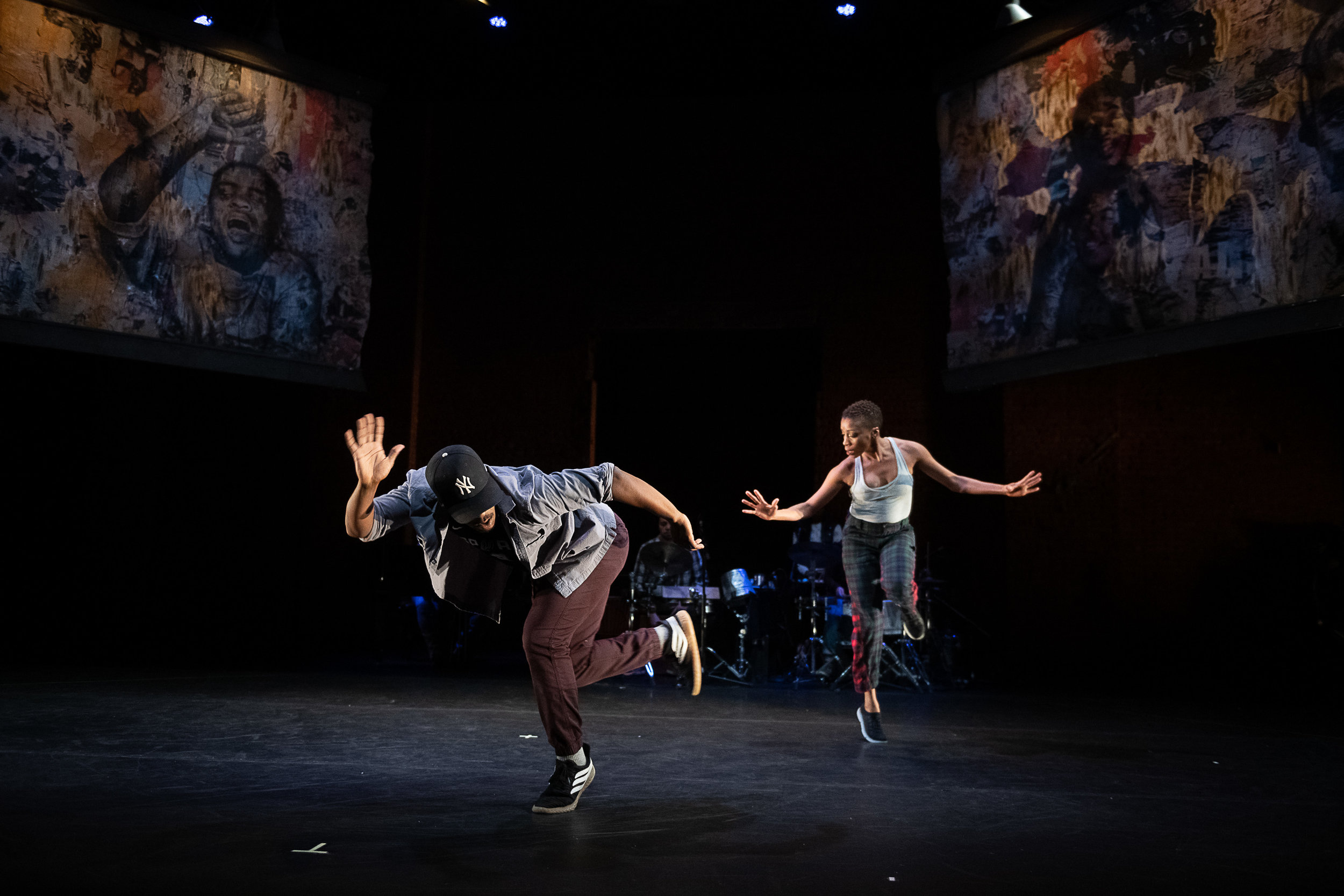ink
World Premiere: December 2, 2017 - The John F. Kennedy Center for the Performing Arts
“I see black people as superheroes because we keep rising.”
~ Question Bridge: Black Males in America (2012)
“ink” celebrates the rituals, gestural vocabulary, and traditions that remain ingrained within the lineage of the African Diaspora and reclaims African-American narratives by showcasing their authenticity. The work examines the culture of Black life that is often appropriated, rewritten, or silenced.
In collaboration with Music Director Allison Miller, percussionist Wilson Torres, violinist Juliette Jones, and composer/pianist Scott Patterson, “ink,” is the final installation of Brown’s dance theatre trilogy about identity (along with “Mr. TOL E. RAncE”- 2012, “BLACK GIRL: Linguistic Play” – 2015). Together, using the rhythms and sounds of traditional African and handmade instruments as its center, the work travels through time with elements of Blues, Hip-Hop, Jazz, and Swing. This musical landscape embodies its own storytelling. The movement is an amalgamation of African-American social dance, African, Tap, Jazz, Modern, and Hip-Hop. Through self-empowerment, Black love, brotherhood, exhaustion and resilience, community and fellowship, “ink” depicts the pedestrian interactions of individuals and relationships as grounds for accessing one’s innate super powers and finding liberation.
CREATIVE TEAM
ARTISTIC DIRECTOR: Camille A. Brown
DANCERS: Beatrice Capote, Kendra 'Vie Boheme' Dennard, Timothy Edwards, Catherine Foster, Juel D. Lane, Maleek Washington
MUSICIANS: Juliette Jones, Wilson R. Torres, Allison Miller and Scott Patterson
MUSICAL DIRECTOR: Allison Miller
DRAMATURGS: Daniel Banks, Kamilah Forbes, Talvin Wilks
LIGHTING & SCENIC DESIGNER: David L. Arsenault
COSTUME STYLIST: Mayte Natalio
SOUND DESIGNER: Justin Ellington
SPECIAL THANKS
The lead commissioners for ink are Peak Performances @ Montclair State University, NJ and The John F. Kennedy Center for the Performing Arts (Washington, D.C.), with support from the Lumberyard. ink also received co-commissioning support from ASU Gammage.
The creation and presentation of ink was made possible by The New England Foundation for the Arts’ National Dance Project, with lead funding from the Doris Duke Charitable Foundation and the Andrew W. Mellon Foundation; The MAP Fund, supported by the Doris Duke Charitable Foundation and the Andrew W. Mellon Foundation; New York State Council on the Arts with the support of Governor Andrew M. Cuomo and the New York State Legislature; and the Howard Gilman Foundation.
ink was given its original creative development residency by The Sharon Disney Lund School of Dance in partnership with The Evelyn Sharp/CalArtsSummer Choreographic Residency. The development of ink was made possible, in part, by the Maggie Allesee National Center for Choreography at Florida State University with support from the Princess Grace Foundation. The work is also being created, in part, during a production residency at ASU Gammage, University of Iowa’s Hancher Auditorium, 2017 Off-Shore Creation Residency at The Yard and creative residencies at Peak Performances @ Montclair State University, NJ, Jacob’s Pillow, Hobart & William Smith Colleges and CUNY Dance Initiative at Kingsborough Community College.
CHOREOGRAPHER’S NOTE
“I write to create myself.” —Octavia E. Butler
Culture codes
Balance
Milkshake
Turf
Shedding
Migration
After the creative process for "BLACK GIRL: Linguistic Play," I held a desire to dig even deeper and tell more stories of ritual, gestural vocabulary, and traditions of the African Diaspora. Our ancestors live inside of our bodies, because of this I began to investigate what accessing that power looks, sounds, and feels like. For inspiration, I was immediately drawn to two albums that had a significant impact on me when I was growing up. "The Miseducation of Lauryn Hill" by Lauryn Hill, and, "Like Water for Chocolate" by Common. I tasked myself with creating a movement language that embodied the same raw authenticity, and vulnerability that fuels those lyrics and music.
As I began to develop the concept for "ink," I wanted the dancers to represent superheroes. I couldn’t figure out why I had the urge to play with this idea until I read "Question Bridge: Black Males in America"*. One of the men interviewed said, “I see Black people as comic book heroes because they always keep rising.” That was it! It is about showing that in our basic survival, and natural attributes we have superhuman powers. Powers to shift, overcome, transform, and persevere even within an often hostile environment. The seven sections of "ink" represent super powers of spirituality, history and heritage, the celebration of the Black female body, Black love, brotherhood, exhaustion, and community.
"ink" is the culmination of my trilogy on Black identity following, "Mr. TOL E. RAncE" (2012) and "BLACK GIRL: Linguistic Play" (2015). The opening solo, “Cultural Codes” begins with a call to Elegba - a Yoruba deity that that opens and clears the space as guardian, protector, and communicator. Through the various revolutions of a structured phrase, the grio pulls out all the manifestations of Blackness. This solo makes possible "Balance", a duet inspired by the Hustle and Lindy hop that displays the beauty of Black love and intimacy. Black love moves to Black beauty, inspired by Saartje Baartman’s ample curves, "Milkshake," transposes the objectification of the Black female body into a rhythmic celebration and glorification of her form. It’s where “pattin Juba” meets “Go Go”. If "BLACK GIRL: Linguistic Play" was a call, "Turf" is the response illustrating the Black male rite of passage propelled by “the dab”. Two innocents are hit with the reality of navigating being Black Men in America while protecting one another through it all. For those who bear the burdens of others, "Shedding," evokes the story of those who keep us lifted even in the midst of their own enervation. We are lead to "Migration", a community of love support and enduring vitality moving with the sound of the violin- a reference the Kora, a West African instrument. With Musical references ranging from Ancestral rhythms, Go Go, Dancehall, The Notorious B.I.G. (Sky’s the Limit), Mary J. Blige (Real Love), Common (Time Travelin') and Jill Scott (Jilltro), "ink" uses the power of the past and present to propel us into the future.
I lift up our real life super heroes of the past who paved the way for us to fly and “be fly”. In flight, we see the super power of Black people in America.
We keep rising.
~ Camille A. Brown
* "Question Bridge: Black Males in America" is by Dr. Deborah Willis (Author, Editor), Chris Johnson (Author), Hank Willis Thomas (Author), Bayeté Ross Smith (Author), Kamal Sinclair (Author), Delroy Lindo (Author), Rashid Shabazz (Author), Natasha L. Logan (Editor), Jesse Williams (Preface), Andrew Young (Introduction)
PRESS
““ink” flies by, a rousing and incisive final statement. While she has branched out into Broadway and television in recent years — choreographing “Choir Boy,” “Once on This Island” and NBC’s “Jesus Christ Superstar Live in Concert” — Ms. Brown appears as dedicated as ever to her own company, Camille A. Brown & Dancers, both as a performer and lead creator.” Read full article
— New York Times
“The choreographer Camille A. Brown has a rare talent...As she put it: “I put onstage what I want to see and have seen and I believe is out there.” With her rich palette of dance and human gesture, she has the tools with which to do it.” Read full article
— Dance Tabs
“the audience couldn’t leave with any of it twisted. That makes ink a both celebration and a necessary act of opposition, advancing fundamental counter-narratives against representations of race that have turned dramatically more toxic in our culture and our politics over the last two years.” Read full article
— Indy Week
“Ink, is, ultimately, embodied history that touches hearts and souls… Her wheelhouse has been mining black identity and her works speak to the “woke” among her audiences, but even more important, they speak to the uninitiated teasing out questions, comments and realization from those for whom the depictions of intimate “souls of black folk” – to borrow a turn of phrase from W.E.B. Dubois – are outside their experience or understanding.” Read full article
— DC Metro Theater Arts
“Camille A. Brown works like a fine jeweler on her choreography… beautiful study of personal and even secretive gestures and rituals… Brown’s seven dancers, including her, can make you believe that whole weather systems are coursing through their bodies”
— The Washington Post
“With every move in "ink," it's as if her dancers are inscribing those stories using a new language of rhythm and gesture, both ephemeral and indelible.”
—Times Union
"What unfolds is a parade of the beautiful diverse spectrum that is blackness...at once performing yet simply being."
-Theresa Ruth Howard
More:
The Mask of Survival: Black Performance in Dance, The Offing

